
Imagine a massive supermarket with over 353 million products all vying for your attention. That's the reality of selling on Amazon – a fiercely competitive marketplace where standing out is crucial for survival and success.
The solution? Optimizing your Product Listing On Amazon to perfection!
Amazon's Search Engine (aka A9), prioritizes relevance and customer experience when ranking products for Amazon Search Results. This means using the right keywords strategically in your titles, descriptions, and backend fields to align with how customers actually search.
Get the listing right, and if we believe the survey results, you'll be rewarded with enhanced visibility, more clicks, and a potential 30% boost in conversion rates.
While Amazon keeps the inner workings of its A9 algorithm under lock and key, following proven best Amazon SEO practices for listing optimization can significantly improve your product's discoverability and sales potential on this massive platform.
What Is Amazon SEO?
Amazon SEO (Search Engine Optimization) refers to the practices and strategies used to optimize product listings on Amazon's marketplace to improve their visibility and ranking in Amazon's search results.
Key Points
- Purpose: The main goal of Amazon SEO is to increase a product's discoverability and sales by making it more visible to relevant customer searches on Amazon.
- How it Works:
Amazon has its own algorithm called A9 that ranks product listings based on various factors like:- Relevance of title, bullet points, description to the search query
- Product sales performance and pricing
- Customer reviews and ratings
- Availability and fulfillment method
- Importance: With millions of products listed on Amazon, good Amazon SEO is crucial for sellers to stand out, drive more product visibility, clicks, and ultimately sales.
What Are The Essentials Of Amazon SEO?
Amazon SEO is the foundation of crafting product listings that captivate and convert. It focuses on enhancing product discoverability by strategically placing target keywords in the product listing content.
Effective Amazon listing copywriting is not only about making the product stand out but also optimizing for Amazon's search algorithm to increase visibility and attract more buyers.
For Amazon sellers, curating product listings that resonate with potential customers is crucial. Sellers should continually monitor and update their listings to ensure they align with current market trends and consumer preferences.
The core elements of Amazon SEO include:
- Keyword-rich product titles
- Informative and concise bullet points
- Engaging product descriptions
- Backend search terms
By integrating these elements with targeted keywords, sellers can improve their product's search rankings and visibility on the platform.
Keyword Research For Optimal Visibility

Effective keyword research is the cornerstone of successful Amazon listing copywriting, as it not only improves a product's search ranking but also its potential to be discovered by the right customers.
1. Finding The Right Keywords
The journey to optimal product visibility begins with identifying the most relevant keywords. Sellers must delve into extensive research, examining search results and competitor listings to pinpoint the terms that resonate with their product.

These keywords should align with what potential customers are entering into the Amazon search bar when looking for products similar to those being offered.
The right keywords can dramatically elevate a product's position in search results, thereby increasing the likelihood of sales. For a deeper understanding of keyword strategies, sellers can utilize these top Amazon Keyword Tools of 2024.
2. Long-Tail Keywords for Targeted Reach
To capture a more targeted audience, incorporating long-tail keywords into listing copy is a strategic move. Long-tail keywords, which are longer and more specific phrases, cater to customers who are further along in the buying process and know exactly what they want.
These keywords often have less competition and can lead to higher conversion rates as they match precise customer searches.
| Keyword Type | Example |
|---|---|
| Short-Tail | “yoga mat” |
| Long-Tail | “extra thick non-slip yoga mat” |
Long-tail keywords should be a key component in amazon listing optimization strategies.
3. Incorporating Keywords Strategically
Once the right keywords have been identified, the next step is to integrate them into the Amazon listing in a way that maximizes visibility without compromising the readability and quality of the content.
This includes placing keywords in the product title, bullet points, and description in a strategic manner, ensuring they are contextually relevant and organically woven into the content.
To maintain the integrity and quality of the listing while also optimizing for search, here’s an example of how to incorporate keywords:
| Listing Section | Keyword Integration |
|---|---|
| Title | Include primary keyword at the beginning |
| Bullet Points | Use secondary keywords while highlighting features |
| Description | Weave in long-tail keywords to elaborate on benefits |
Incorporating keywords strategically requires a balance between SEO and consumer readability, ultimately leading to a compelling listing that resonates with both Amazon's algorithms and potential buyers.
4. Backend Keywords

Backend keywords are additional search terms that sellers can add to their product listings, allowing Amazon's algorithm to better understand and index the relevance of their products to specific customer searches. These hidden gems, invisible to customers but visible to Amazon's search algorithm, act as a secret weapon to boost your product's visibility and discoverability.
By strategically incorporating these keywords, you can significantly increase your chances of appearing in more search results, driving more traffic, and ultimately, boosting your sales.
According to a study by Jungle Scout, listings optimized with relevant backend keywords can experience a staggering 39% increase in sales.
To leverage the power of backend keywords, start by conducting thorough keyword research to identify the most relevant and high-traffic search terms in your niche.
Ideal Way Of Product Listing On Amazon
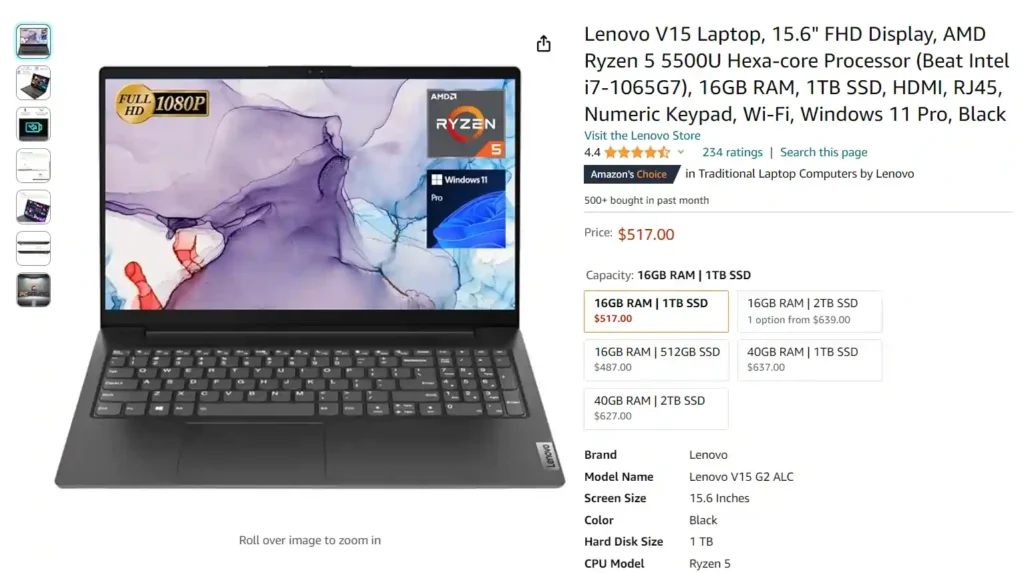
When optimizing listings, it's crucial to keep User Experience in mind. A well-optimized listing not only attracts potential customers but also provides them with the necessary information to make an informed purchase decision.
1. Title Optimization Techniques
A product title is often the first interaction a potential customer has with a listing. Therefore, it's imperative to craft a title that is not only informative but also keyword-optimized to capture attention and encourage clicks.

A well-crafted product title should include the brand name, product name, key features, and benefits. This not only attracts customers but also improves click-through rates.
Remember to keep titles concise yet informative to maintain readability and appeal to the target audience.
2. Bullet Points That Sell
Bullet points give sellers the opportunity to succinctly convey the most compelling aspects of their product. They should address customer pain points, highlight key features, and differentiate the product from competitors.
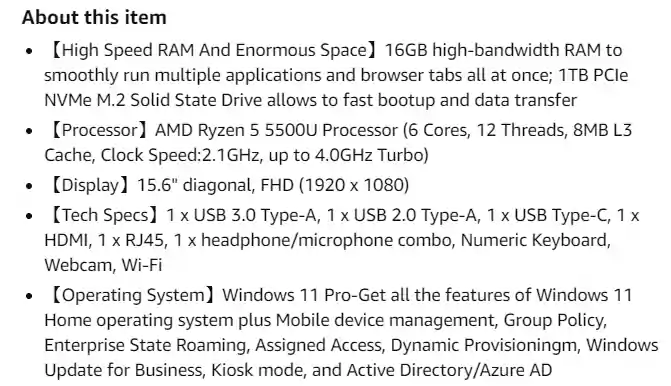
When writing bullet points, consider the following:
- Focus on benefits, not just features
- Use persuasive language to encourage purchasing decisions
- Include primary and secondary keywords naturally
- Keep bullet points concise for easy scanning
Crafting compelling product listings through strategic amazon listing copywriting is an ongoing process that requires attention to detail and a deep understanding of SEO practices.
3. Detailed Product Descriptions In Product Listing

Specify important details like size, quantity, or color in a clear, easy-to-read format. Customers appreciate knowing exactly what they're getting, and this clarity can reduce returns and increase satisfaction.
What's the USP of your product?
When crafting your product descriptions, focus on highlighting unique features or uses of the product that set it apart from competitors. It's not just about what the product is, but what it does differently.
For example, if you're selling a water bottle, mention if it has a built-in filter for travelers or athletes.
4. Branding & Amazon's Trust
Creating compelling and SEO-optimized product descriptions on Amazon is not just about listing features; it's about telling a story that resonates with your audience.

Brands that have mastered the art of storytelling on Amazon often see a significant boost in their product's visibility and sales.
Brands utilizing Amazon's Search Query Performance dashboard see an average 18% increase in click-through rates from optimized search terms.
Pricing & Promotions
Promoting your products and pricing them properly is also crucial. Setting competitive prices and offering timely promotions can significantly impact your product's appeal. Keep an eye on market trends and adjust your pricing strategy accordingly to stay ahead of the competition.

Make your product not just another item in their cart, but a solution to their needs or a way to enhance their lifestyle.
Enhancing Product Listings with Visuals
High-quality images, lifestyle photography, and videos are not just embellishments; they are vital components that can significantly influence a customer's decision-making process.
The Importance Of Quality Images
Amazon has set high standards for product images to ensure that customers have a clear and accurate visual representation of what they are purchasing. The main image, which is the first one viewed by customers, is particularly crucial in driving conversions.

Images are often the first impression a customer has of a product on Amazon. Good listing image design is crucial as consumers heavily rely on visuals to make purchasing decisions in the digital age of online shopping.
High-quality, visually appealing images are not only essential for attracting potential customers but also for increasing sales and improving brand perception.
Clear, high-resolution images that depict the product from multiple angles and show key features provide customers with a better understanding of what they are purchasing. This can lead to better customer engagement and a lower return rate.
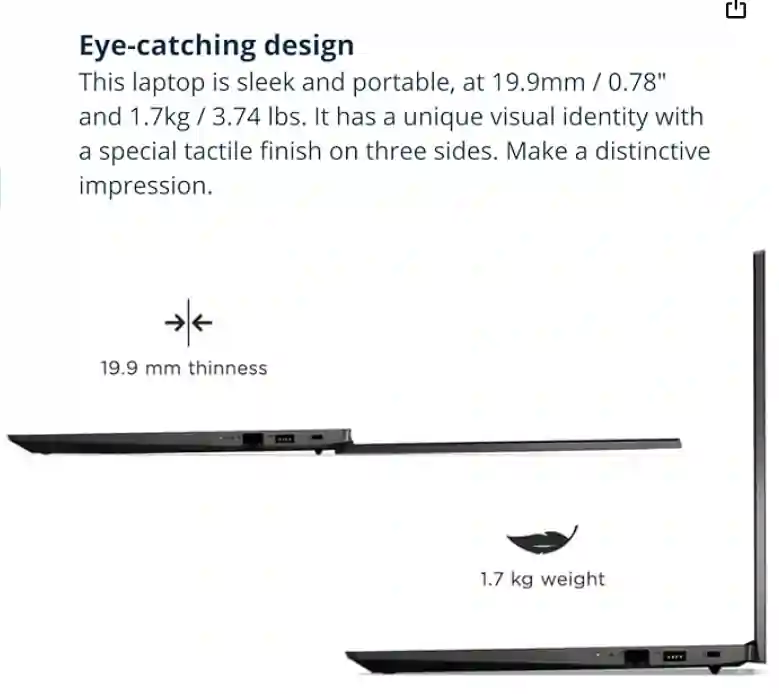

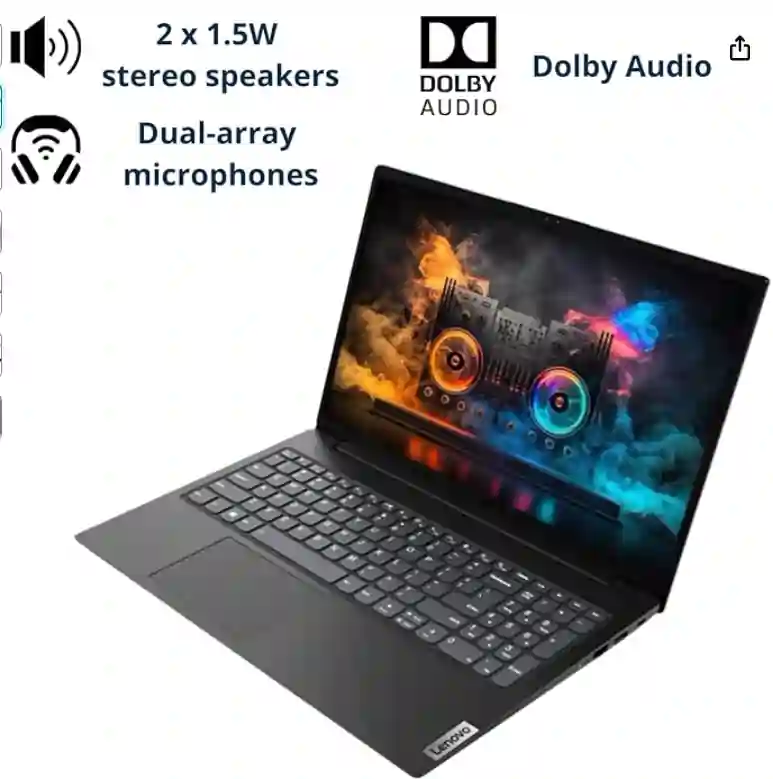
The main image must be a professional quality image that fills at least 85% of the frame, with a pure white background to minimize distractions.
| Image Requirement | Details |
|---|---|
| Background | White (RGB 255,255,255) |
| Main Image Frame Fill | At least 85% |
| Professional Quality | Required |
A product listing with professional and compelling images can set a business apart in the crowded Amazon marketplace.
Using Lifestyle Photography Effectively
Lifestyle photography involves capturing images of the product in its intended environment or in use, which helps customers visualize themselves using the product.

This form of photography can effectively showcase the practicality and benefits of the product, thus creating an emotional connection and enhancing the appeal of the listing.
- Use high-resolution images that tell a story about the product.
- Showcase the product in realistic settings that resonate with the target audience.
- Highlight the unique selling points of the product through the context of the images.
Lifestyle photography can complement the standard product images by adding depth to the visual experience and giving customers a reason to imagine the product in their lives.
Video And A+ Content Benefits In Product Listing
In addition to images, Amazon allows sellers to enhance their product listings with videos and A+ Content.
Videos offer an engaging way to demonstrate the product's features and benefits, often leading to increased conversion rates. They provide a dynamic visual representation that can capture attention and convey information effectively.

A+ Content, on the other hand, enables sellers to create a rich brand story with enhanced images, custom text placements, and more detailed product descriptions. This level of content can significantly enhance the customer experience by providing an in-depth look at the product and the brand behind it.
Benefits of incorporating video and A+ Content include:
- Increased customer engagement and time spent on the listing.
- Improved brand recognition and loyalty.
- Higher conversion rates due to detailed product information and storytelling.
Remember that maintaining a professional presentation matters, and investing in high-quality visuals can pay off in the long run by distinguishing your products from the competition on Amazon.
Customer Feedback In Product Listing On Amazon
Customer feedback plays a pivotal role in the success of an Amazon business, influencing not just the perceived value of products but also their visibility on the platform.
1. Using Reviews to Improve Listings
Online reviews are a goldmine of information, with 93% of buyers stating that reviews influence their purchasing decisions. Products that garner more and higher quality reviews are likely to rank higher in Amazon's search results, making customer feedback invaluable for sellers.
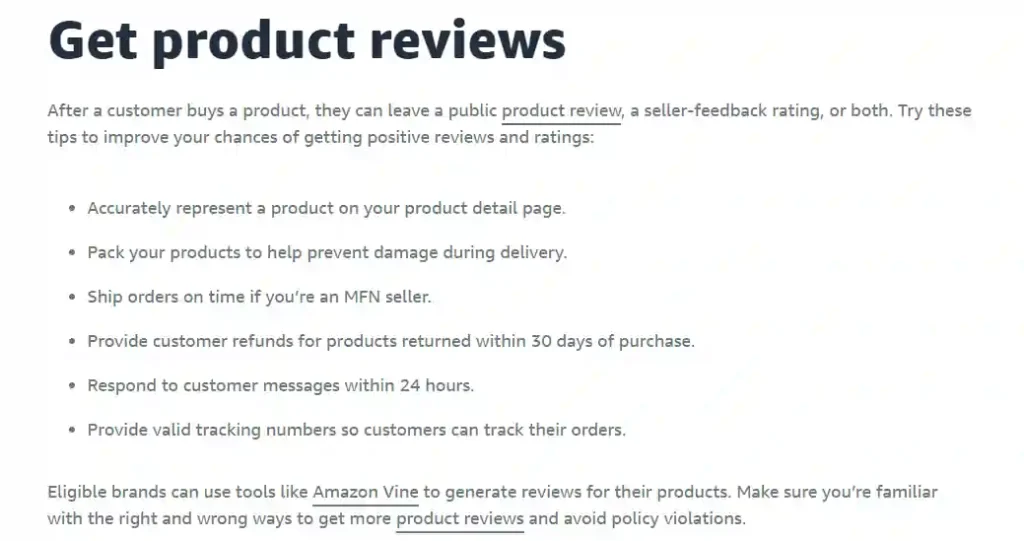
By analyzing reviews, sellers can identify product strengths to highlight and weaknesses to address, thereby improving their product listings.
Implementing changes based on customer reviews can lead to an enhanced reputation and better customer satisfaction. It's also beneficial to engage with reviews by responding to them and demonstrating that customer opinions are valued and taken seriously.
For managing feedback more effectively, consider using amazon feedback software.
2. Direct Research With Consumers
Direct research with consumers offers an unfiltered look into the minds of the target audience. Polls, surveys, or direct conversations can reveal what customers truly want and expect from products. Platforms like PickFu or community engagements can be leveraged to gather this essential feedback.
By understanding customer preferences and needs through direct research, sellers can tailor their products and listings more effectively, which can lead to increased conversions and sales.
3. Learning from Competitor Analysis
Competitor analysis may reveal trends in customer preferences and common issues that customers face with similar products. Using these insights, sellers can optimize their listings to address these pain points and improve their value proposition.
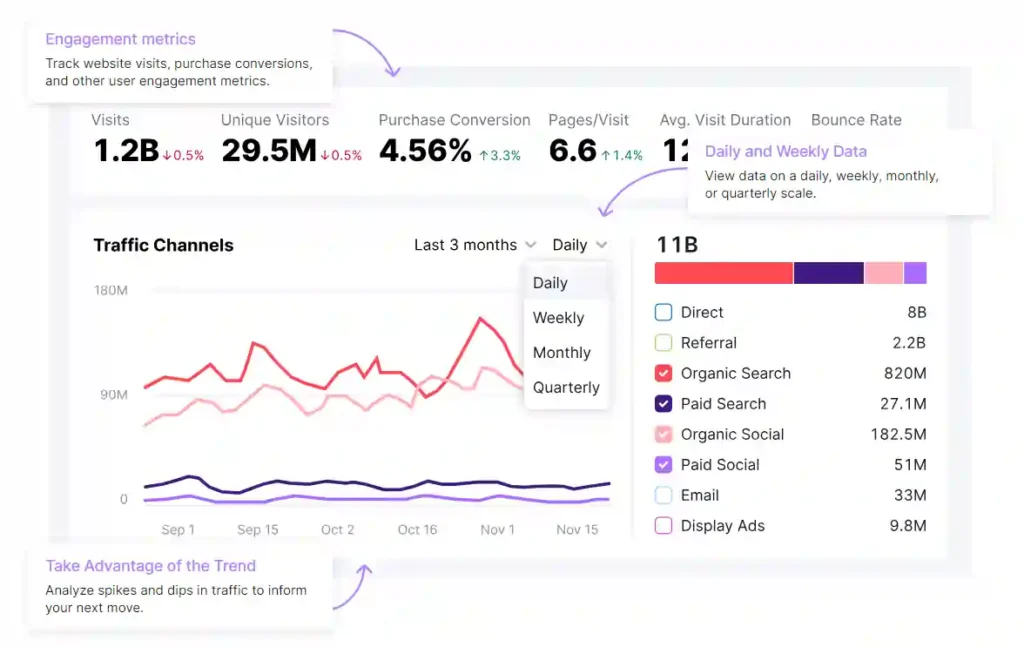
Studying competitors on Amazon is an excellent way to gather indirect customer feedback.
By analyzing competitor product listings, designs, pricing strategies, and customer reviews, sellers can gain invaluable insights into the market. These insights can help identify gaps in the market & opportunities for differentiation.
Whether it's through analyzing reviews, conducting direct customer research, or learning from competitors, successful sellers know that the customer's voice is instrumental in maximizing the potential of their Amazon business.
Maintaining Listing Updates- Be Relevant & Trendy!
Keeping content fresh is a key aspect of amazon listing optimization. Regular updates to your product listings ensure that information is current, relevant, and engaging.
This could include updating product descriptions to reflect any enhancements, revising bullet points to include new keywords or information, and ensuring that all backend search terms are optimized.
| Content Update | Frequency |
|---|---|
| Product Descriptions | Quarterly |
| Bullet Points | Biannually |
| Backend Keywords | As needed |
By revising and refreshing content periodically, sellers can improve product discoverability and relevance in search results.
Rank On Amazon Using These Tools!

Discover Helium 10 tool that can transform your approach to increasing both visibility and sales on Amazon. It provides critical insights into important metrics such as listing quality scores, keyword rankings, and overall sales performance, making it an indispensable resource for any ambitious Amazon seller.
FeedbackWhiz is a comprehensive suite of tools designed for Amazon sellers to enhance their business operations. It offers features for managing feedback, automating email campaigns, monitoring listings, and analyzing sales data. The platform aims to increase sales, improve customer feedback, and streamline seller activities on Amazon.


ZonBase is a powerful all-in-one software solution tailored for Amazon sellers. It provides a wide range of tools, including product research, keyword research, listing optimization, and profit analytics. ZonBase is designed to help sellers find profitable products, optimize their listings, and increase their sales on the Amazon marketplace.







